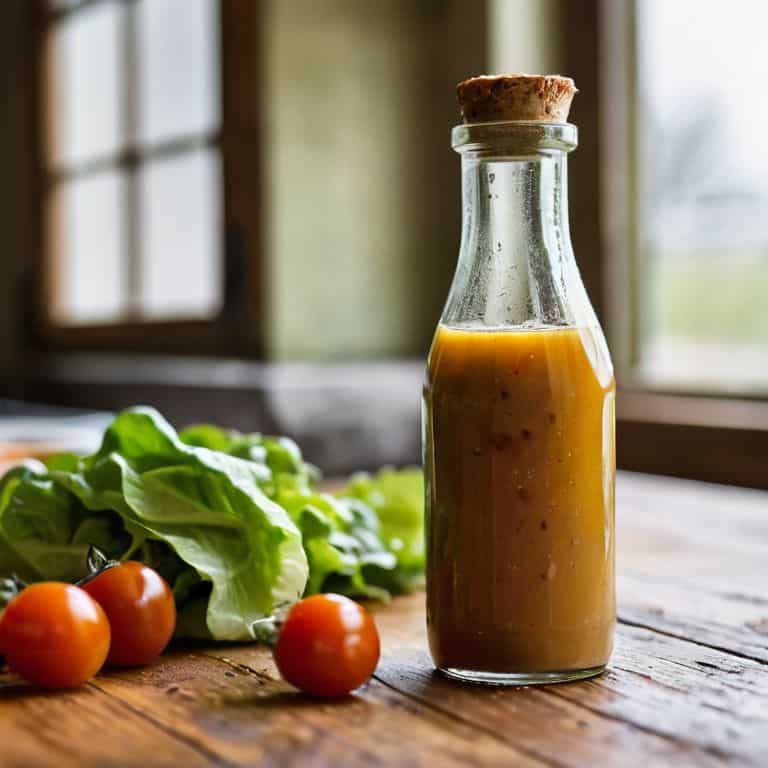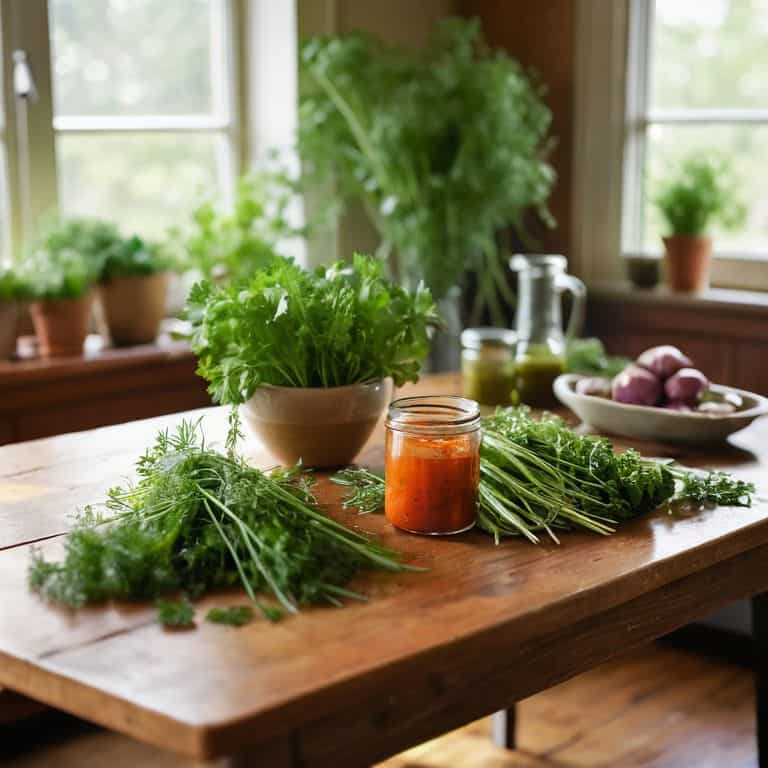As I always say to my flight students, _navigation is key_. But have you ever thought about how this principle applies to something as simple as making a salad dressing? I’m excited to share with you a guide to making vinaigrette, a process that’s often overcomplicated, but can be broken down into straightforward steps. Just like plotting a flight plan, creating the perfect vinaigrette requires a clear understanding of the fundamentals.
In this article, I promise to cut through the clutter and provide you with practical, no-nonsense advice on how to make a delicious vinaigrette. You’ll learn how to balance flavors, choose the right ingredients, and whip up a dressing that will elevate your salads to new heights. My goal is to make the process of making vinaigrette as accessible and enjoyable as a sunny flight on a clear day. So, buckle up and let’s dive into the world of vinaigrette-making, where the right techniques and ingredients will be your _compass to culinary success_.
Table of Contents
Guide Overview: What You'll Need

Total Time: 30 minutes
Estimated Cost: $10 – $20
Difficulty Level: Easy
Tools Required
- Measuring Cups for accurately measuring ingredients
- Whisk for mixing vinaigrette
- Glass Jar with a tight-fitting lid for storing vinaigrette
Supplies & Materials
- Olive Oil extra virgin or regular
- Vinegar such as balsamic, apple cider, or white wine
- Salt for seasoning
- Sugar optional, for balancing flavor
- Dijon Mustard optional, for added flavor
- Fresh Herbs such as parsley, basil, or dill, for added flavor
Step-by-Step Instructions
- 1. First, let’s start by gathering our ingredients, just like a pre-flight checklist. We’ll need a neutral-tasting oil, such as canola or grapeseed, and an acid, like lemon juice or vinegar. I like to use a variety of ingredients to create unique flavor profiles, but for our basic vinaigrette, we’ll stick to the essentials.
- 2. Next, we’ll need to determine the ratio of oil to acid. A common starting point is a 3:1 or 4:1 ratio of oil to acid, but this can be adjusted to suit your taste. For our purposes, let’s aim for a 3:1 ratio. This means if we’re using 3 tablespoons of oil, we’ll use 1 tablespoon of acid.
- 3. Now, let’s prepare our acid component. If using lemon juice, simply squeeze the juice from a fresh lemon into a small bowl. If using vinegar, measure out the desired amount. I find that using a high-quality vinegar can make a big difference in the flavor of our vinaigrette.
- 4. In a small bowl, whisk together the acid and a pinch of salt until the salt is dissolved. This helps to bring out the flavors and balance the acidity. Don’t overdo it with the salt, as we can always add more, but it’s harder to remove excess salt from our vinaigrette.
- 5. Slowly pour the oil into the acid mixture while continuously whisking. This is where the magic happens, and our vinaigrette starts to come together. Remember to whisk in a slow and steady manner to ensure the ingredients emulsify properly.
- 6. Continue whisking until the vinaigrette has thickened slightly and appears well combined. If it’s still a bit too thin, we can add a bit more oil. If it’s too thick, a small amount of water or additional acid can be added to adjust the consistency.
- 7. Finally, taste our vinaigrette and make any necessary adjustments. This is the final check before we’re ready to serve. If it needs a bit more acidity, add a squeeze of lemon. If it’s too acidic, a bit more oil can be added. Once we’re happy with the flavor, our vinaigrette is ready to use.
A Guide to Making Vinaigrette

As we navigate the world of diy salad dressing recipes, it’s essential to understand the importance of blending oil and vinegar in harmony. This balance is crucial, just like the balance of lift and weight in an aircraft. When you get it right, the result is a smooth, flavorful vinaigrette that elevates any salad.
To avoid common vinaigrette mistakes, remember that the key to a great vinaigrette is in the flavorful vinaigrette ingredients you choose. Fresh herbs, high-quality oils, and a pinch of creativity can make all the difference. Don’t be afraid to experiment with easy vinaigrette variations, like adding a squeeze of citrus or a drizzle of honey, to create a unique taste experience.
When it comes to storing your freshly made vinaigrette, keep in mind a few vinaigrette storage tips. It’s best to store it in an airtight container in the refrigerator to prevent spoilage and maintain its flavor. By following these simple tips, you’ll be well on your way to creating delicious, homemade vinaigrettes that will take your salads to new heights, just like a perfectly executed flight plan.
Avoiding Common Vinaigrette Mistakes
As we navigate the flight plan to perfect vinaigrette, it’s essential to avoid common pitfalls. Just like turbulence can throw off a flight, improper balance can ruin our dressing. A mistake I see often is using too much vinegar, which can leave our vinaigrette tasting sour. To avoid this, start with a small amount of vinegar and gradually add more to taste.
Another mistake is not emulsifying properly, resulting in a separated dressing. This can be compared to failing to stabilize an aircraft’s descent – it’s all about finding the right balance. To prevent separation, whisk your vinaigrette thoroughly and consider adding an emulsifier like Dijon mustard. By being mindful of these potential errors, you’ll be well on your way to creating a smooth and delicious vinaigrette.
Blending Oil and Vinegar Basics
Blending Oil and Vinegar Basics
When combining oil and vinegar, think of it like navigating through turbulence – you need a steady hand. The key is to start with a balanced ratio, typically 3 parts oil to 1 part vinegar. This is your foundation, just like the fundamentals of flight. As you slowly pour the oil into the vinegar, whisk constantly to emulsify the mixture, creating a smooth and stable blend.
Just as a pre-flight checklist ensures a safe takeoff, having the right tools for blending is crucial. A simple whisk or handheld blender can be your co-pilot in achieving the perfect emulsion. Remember, patience is key – blend slowly and steadily, allowing the ingredients to come together in harmony. With practice, you’ll develop a sense of when the mixture is just right, much like a pilot develops a feel for the aircraft.
Navigating the Skies of Flavor: 5 Key Tips for Making Vinaigrette
- Start with a solid flight plan: Choose a ratio of oil to vinegar that suits your taste, just as you would plan your flight route
- Check your instruments: Use high-quality ingredients, such as extra-virgin olive oil and aged vinegar, to ensure a smooth flavor profile
- Plot your course: Gradually add ingredients to your vinaigrette, tasting as you go, to avoid turbulent flavors
- Steer clear of obstacles: Avoid over-dressing your salad, as too much vinaigrette can be overwhelming, just like navigating through dense fog
- Land smoothly: Finish your vinaigrette with a pinch of salt and a grind of pepper to bring all the flavors together, just as you would smoothly land a plane
Key Takeaways for Perfect Vinaigrette
Remember, the ratio of oil to vinegar is crucial: start with a 3:1 ratio and adjust to taste, just as you would adjust your flight plan according to changing weather conditions
Choose your ingredients wisely: high-quality oils and vinegars make all the difference, much like how the right equipment can affect the safety and success of a flight
Experiment and be patient: finding the perfect vinaigrette is a process, and it’s okay to make mistakes – after all, even the most experienced pilots have to navigate through turbulence occasionally
Navigating the Skies of Flavor

Just as a steady hand and a clear mind are essential for landing a plane, patience and precision are the keys to crafting the perfect vinaigrette – it’s all about finding the right balance and navigating the flavors with ease.
Daniel Sato
Navigating the Skies of Flavor
As we conclude our journey through the world of vinaigrette, let’s take a moment to review the basics. We’ve covered the essential steps to create a delicious and balanced vinaigrette, from selecting the right oils and vinegars to blending them in harmony. By following these simple steps and avoiding common mistakes, you’ll be well on your way to becoming a master vinaigrette maker. Remember, the key to a great vinaigrette is finding the perfect balance of flavors, so don’t be afraid to experiment and adjust the ingredients to your taste.
As you take to the skies of culinary exploration, keep in mind that practice makes perfect. Don’t be discouraged if your first attempts at making vinaigrette don’t turn out exactly as you hoped – it’s all part of the learning process. With time and patience, you’ll develop your own unique style and flavor profile, and you’ll be creating delicious vinaigrettes like a pro. So go ahead, take the controls, and navigate the world of flavor with confidence – the skies are yours to explore!
Frequently Asked Questions
What is the ideal ratio of oil to vinegar for a classic vinaigrette?
When it comes to the ideal ratio of oil to vinegar, think of it like setting your aircraft’s altitude – you need a steady balance. For a classic vinaigrette, I recommend a 3:1 ratio of oil to vinegar. This balance allows the flavors to soar, just like a well-trimmed plane cruising through calm skies.
Can I use any type of vinegar, or are there specific ones that work best for vinaigrette?
When it comes to choosing a vinegar for your vinaigrette, think of it like selecting the right altitude for a smooth flight. You’ve got options, but some work better than others. I recommend sticking with apple cider, balsamic, or white wine vinegar for the best flavor profiles. Just like how different altitudes offer unique views, these vinegars will give your vinaigrette distinct characters.
How do I store homemade vinaigrette to maintain its flavor and texture over time?
Storing homemade vinaigrette is like securing an aircraft for a long-term parking – you want to protect it from the elements. I recommend using airtight containers, keeping them in the fridge, and giving them a good shake before use. This will help maintain the flavor and texture, just like how a pre-flight check ensures a smooth flight.
